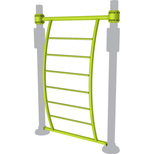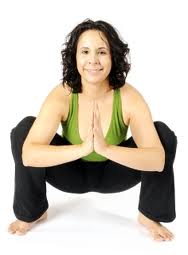|
This week I am in Barcelona, Spain competing in Life Fitness' Global Personal Trainers to Watch competition. Since I am in the learning phase of my yoga training, yoga is always on my brain. Being in Spain made no difference. Thus, in the wee hours of the morning, jet-legged and all, I was up writing a yoga sequence that I could do on the Life Fitness Synrgy BlueSky. Here is what I came up with! Monkey Bar (Long) Dip/Leg Raise StationArc LadderTraverse Bar (Long)
Step Station
Cargo Net (Long)
Row Station Press Station Pull-Up (Short)
Ab Station
Having a chance to "play" on a new piece of equipment is always fun for me. This event was an experience of a lifetime and my yoga teacher in training came along for the ride too! LW
0 Comments
It amazes me how adaptations can happen without even realizing it. After years of practicing yoga, I'm not sure if I truly respect how much my body has "improved", or shall I say, my flexibility and strength has improved. Using props for support has been essential to get into poses that seem challenging.
Adaptation isn't more evident than in deep squat/sitting down pose (Upavesasana) or garland pose (Malasana). Notoriously tight calves, particularly the right, have been my greatest weakness in this pose. I've placed foam blocks under my heels for many years just to get into the correct position. But, I'd have to say over past couple years (maybe increased flexibility of my joints during pregnancy), I've been very capable to flex at my ankles which allows me to get so low! Now that low position has always made me question the pose because of my earlier schooling, is the deep squat not good for the knees? Interestingly, if you ever watch a baby or toddler squat, it is the same position as squat or garland pose. So, with that being said, this pose is probably more innate and natural than a higher positioned "fitness" squat. In searching out more about this pose, I came across some interesting discussions. As noted above, there are two names for this pose. Not to get into much detail, it seems that there has been debate as to how the Sanskrit name was translated. What seemed to resonate in most places was that this pose is related to digestion and excrement (I see how the pose may have been a traditional position to go to the bathroom in!) Physically, the squat position is stretching the low back, hamstrings and calves. Strength is required in the thighs and front of the shins to maintain the pose. I find the arm positioning (hands in prayer position with the upper arms pressing into the fleshy part of the thighs) maintains my balance and stability. I can't think of any other pose that releases my low back in the same way and really relaxes the pelvic floor through gravity. Squatting seems to have many health benefits and particularly helpful for preparing for birth. I recently tried to hold my squat for a minute. Yikes! More time is needed for additional adaptation to occur. The nice thing with the squat is many variations also exist with this pose so options (in a chair, against a wall) and props (blocks, strap, rolled up mat) can help support the pose. Looking for more adaptation, LW |
Aspiring Yoga TeacherI've practiced yoga since I was a pre-teen and have always found it to keep me centered. I will be a teacher one day and this is my journey to discover teaching and practice. Archives
April 2019
Categories
All
|
Edmonton, Alberta











 RSS Feed
RSS Feed